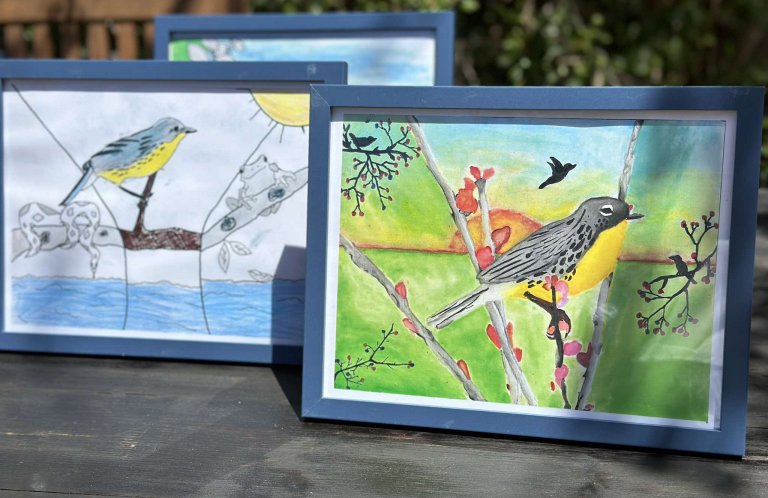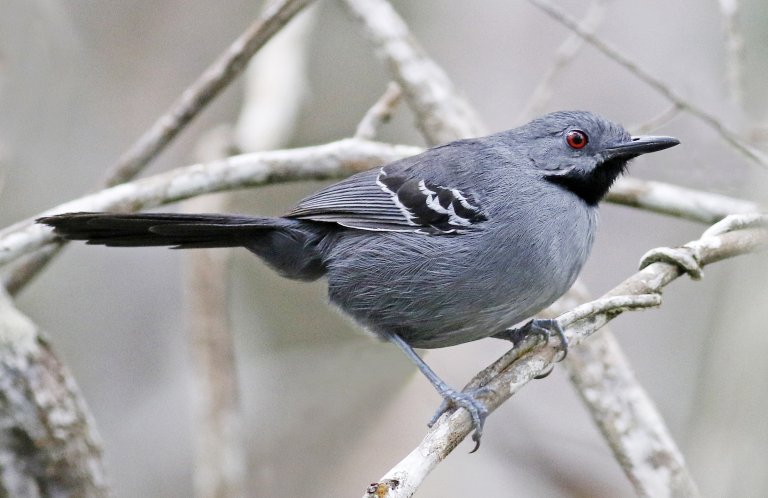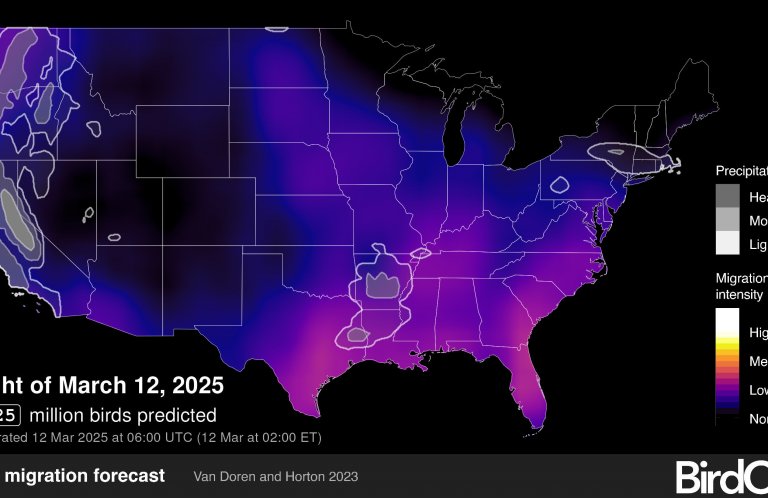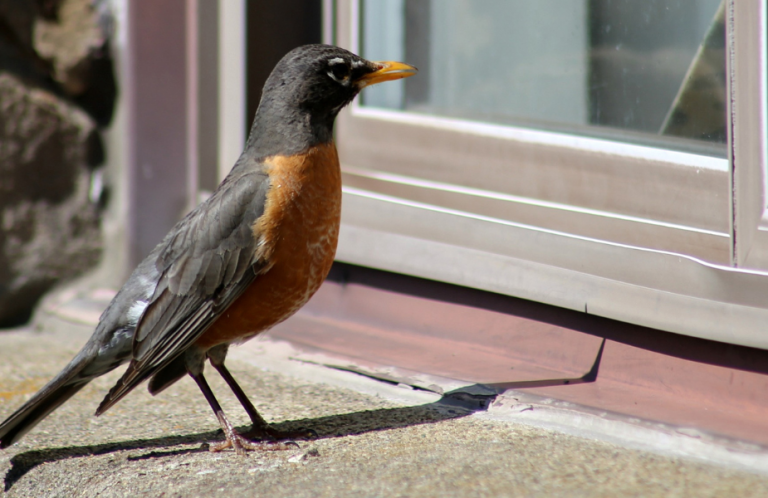A Black Birder's Ramble Through the Thicket of Opinion on Social Movement and Bird Conservation
For birdwatchers, identity is everything. From feathered creatures' reptilian origin to current taxonomy, we go to extremes to know, understand, and label the things we see. Attaching names is critical. Even as some of those names come into question because of associations with racists or other ne'er-do-well human beings, our avi-centric world is one of pigeon-holing. We classify, lump, split, and list. Then we debate it. And even as we're assailed by the life and death struggles of a global pandemic, climate change, devastating political policies linked to catastrophic losses in birdlife, and social justice being meted out inequitably by color line, many try to distract themselves, forgetting all the troubles by watching what the birds are doing.

Illustration by norph, Shutterstock
Although I've built a life that pays me to pay attention to birds, the world since mid-March has made that living hard. As a Black man whose life is calling the birds as I see them, I feel compelled to write about my own self-identity caught in the same grind between all these struggles. Increasingly, I find I'm spending more time talking to those who are not Black, explaining why race even has to enter into the equation. Those conversations mean identifying confusing fall warblers might get bypassed to address failures of society at large and the conservation community specifically, to intentionally (and sustainably) confront institutional racism; to see it as essential as habitat protection or climate change.
I sat in somewhat of a spring migration daze those first few weeks of quarantine from mid-March through mid-May. My university shut its doors and I sheltered in place with the virtual world my new reality. But as news of Ahmaud Arbery's death and Breonna Taylor's death and George Floyd's death and Elijah McClain's death and the resultant protests rose above the persistent fear of viral death for me as a Black man, the usually pleasant questions of which warblers might show up on the next morning's rising sun dimmed with worries over my own identity costing me my life. Already identified by race and health status as being many times more likely to die from COVID-19 than a white person, I was reminded by ongoing scrolling deaths of unarmed Black people that no matter who I was or what I did or how many birds might be on my list, that my skin color was a target for some to reduce my being to a lump of non-living flesh.
When Amy Cooper assaulted (yes, assaulted) Christian Cooper with racialized intent of what she hoped might happen to a Black man “called down” by a white woman in the allegedly progressive innards of Manhattan, it reminded me of how gravely identity matters beyond a bird in my field of view. More so for Black people than Black-and-white Warblers or Black-throated Greens. Birders don't have problems calling out the blackness of birds and appreciating it. Red-winged Blackbirds, Black-necked Stilts, American Black Ducks, Black Oystercatchers, Black-crowned Night-Herons. Yet even as many seek and value blackness among some birds, some have issues dealing with it when it comes to human beings. These days I think, speak, and write to the cognitive dissonance in those who might love black birds but despise Black people. And to be fair, it's not that I think most birders are racist. Many if not most are non-racist. The problem is that not enough are anti-racist. Although some might be led to think the struggles are somehow new — like police brutality or systemic bias — they aren't. In this current, stressful context, some of our bins have just close-focused down on it.
I was fortunate to have been part of what seemed the vanguard of some promising change, working with a passionate group of folks who gathered at three meetings that took place between 2011 and 2013, organized exclusively around the theme of “Changing the Face in American Birding.” We had large audiences in attendance (Philadelphia, Minneapolis, and Harlingen, Texas) and good feelings after the gatherings ended, but somehow, things have largely remained the same. Even as conservation organizations, and state and federal agencies, said the right things, little has happened because those organizations didn't do enough of the right things. I'm not sure they really knew how.
Listservs, multi-day meetings, phone calls, and good intentions don't have the effective leverage that social media does. And so even as the embers of early efforts glowed, much remained the same, with Black birders being harder to find than Black Rails. Enter Black Birders Week (BBW). Millennials and Z-er's blew on the embers with Instagram and Twitter. The flames roared. This new vanguard of bird enthusiasts presses inclusion and diversity issues of social justice in a movement that has re-sparked the importance of thinking beyond plumage color — to how skin color, especially as it applies to Black people, impacts bird-centered vocations, avocations, and conservation/environmental issues writ large.
The timing of unfortunate horrific events and a captive quarantined audience looking for good news provided an opportunity for a re-sparking with the fuel of global protest for racial justice. Where before the fire had little fuel or oxygen to feed it, the spring and summer of 2020 provided more than enough. The week was a conflagration that spread to other nature-based hobbies and occupations. It's a movement within a movement, the Black Naturalists' Emergence, and like many outdoor-centered efforts of the past, birds are the conduit for enlarging the conversation. It's timely, and it's about time.
But even as conditions ripe for societal change have converged, there are still some within the “ranks” who ask the question: “Should bird conservation be concerned with social change?” In a word, yes. Bird study has been closely aligned in the past with women's suffrage, the wilderness movement, and the environmental movement (see Scott Weidensaul's most excellent Of a Feather: A Brief History of American Birding). Outside of racial justice, one might argue that suffrage and the environmental movements forged some of the greatest changes associated with saving birds with some larger greater good as the priming impetus. But then those movements were still homogenized protests of white people around rights still largely subject to separate and unequal.
Somehow, the environmental and civil rights movements, though running parallel in time and some shared agenda, never merged. Martin Luther King, Jr., and Rachel Carson should've sat down to talk about things at his marsh cabin in the South Carolina Low Country. Clapper Rails would've been an appropriate audience for a conversation about human rights and environmental justice.
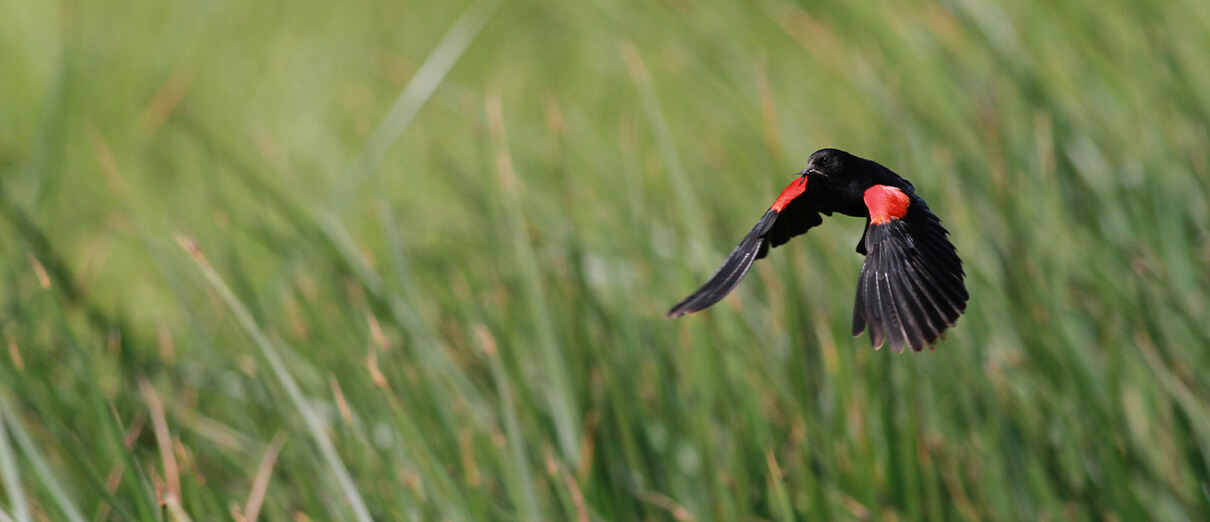
"Red-winged Blackbirds, Black-necked Stilts, American Black Ducks, Black Oystercatchers, Black-crowned Night-Herons … even as many seek and value blackness among some birds, some have issues dealing with it when it comes to human beings." Photo: Red-winged Blackbird by Mike Parr
Fast forwarding, it seems that now there's an opportunity to go forward with some new momentum gathered and on several fronts, to spark movements and momentum. Let's think about this not as a single movement, but one that can evolve on different “flyways.” Even though those migratory flight paths that we envision as narrow, well-defined highways in the sky are in truth broad and diffuse fronts, it is instructive to envision the move to make birding and bird conservation a multipronged effort that springs from several different sources to ultimately converge on making things better for birds and humanity. Those two destinations of mutual benefit must be considered the same if we are to make headway into these challenges of “saving” birds, habitats, and ourselves.
If you attended BBW then you did so virtually/remotely. This was obviously a function of the pandemic and the necessity to keep people safe, but then it also proved how rapidly and effectively a movement can spread (a weekend or two). More people got to listen in and engage than at any physical meeting that might be convened. Thousands watched, listened, and hopefully learned. If you didn't get to attend BBW, go back and watch the panels. They are available online. Find the older efforts as well. Some of the work done with the original Diversity in American Birding efforts set the stage for what is happening now. Read John C. Robinson's Birding for Everyone. Don't forget the ground that's been made a little softer for the new seeds that have been sown. Embrace this new generation's genius with an open heart and mind.
I don't have easy solutions but rather suggestions for going forward. There must be conscious, intentional, intensive efforts to bring the nature of bird-related activities back to being accessible by all who might choose to take part. This can be a top-down and bottom-up initiative. Conservation organizations can make their boards less about the good ol' boy fiduciary “give” and more about the great new whomever talent “get.” That means seeing the value in service beyond dollars. It means that along with darkening board tables by skin color, seeking non-traditional points of view from people who know and love birds, but also have fresh takes on how to get things done.
Viewpoint matters. All one has to do is go back and listen to the panel discussions from BBW or read the wonderful paper on female singing (Casey D. Haines, et al. “The Role of Diversity in Science: A Case Study of Women Advancing Female Birdsong Research,” Animal Behaviour, 2020.) to get a quick grip on just how critical different eyes, experiences, and opinions can be.
From the grassroots level, we must recognize that in many ways, birding, ornithology, and wildlife conservation writ large bear some of the same racist ills that the larger society does. Cases in point were all the birding listservs that excluded any mention of BBW as distractions or being “too political.” This is birding at its worst, an exclusionary, elitist activity that sees itself above and beyond any fray except arguing over gull identification. It's a frustrating blind spot I've frequently observed first hand as folks refuse to drop their binoculars for a moment to see the larger context around them. This has to change. Many of the organizations responsible or associated with those dismissive attitudes and actions found themselves “outed.” Perhaps not the place you want to be if inclusion and diversity is a goal.
Yes, there are racist birders and racist places where Black birders would rather not be. This has to be recognized and reckoned with on every level, from the largest NGO to the smallest bird club, to the individual who thinks that all birders are “woke.” Calling it out where it occurs is important. The historical racism has to be called out when discovered (or known) just as present bias is. Iconic names will be tarnished with the truth. John James Audubon, John Bachman, John P. McCown, and likely more to come who may even bird among us now. There is no “sin” in earnest striving. There is corruption, though, in silence. See something. Hear something. Say something. Find the established white folks out there doing the hard work and taking the risks. Kenn and Kimberly Kaufman are two of the exemplars who've bravely stepped forward, at times at great costs of friends and funding. Work locally with your own birding group to make the difference at home. Use grassroots to line the nest.
I call myself a Cultural and Conservation Ornithologist because I've taken this task on as my calling. It falls into another of my mantras: “Connecting the dots as I color the conservation conversation.” It leads back into that issue of relevance but expands beyond, to an attention that must be paid to audiences and stakeholders that are much more diverse. If the goal is to conserve, then we need all involved that we can muster. Language and thinking, then, have to be inclusive. The intentions should be clear, but the words cannot be such that BIPOCs (Black, Indigenous, People of Color) feel put off by what we hear. Who belongs? Who doesn't?
Each one of us must take stake in our vocation or avocation and look circumspectly at it as something we hope to move forward in ways that broaden the enjoyment of watching, but also widen the capacity for conservation. All policy begins with personal agenda. Movements are the means by which agendas might wind toward some greater good. Here we have the opportunity as bird lovers to be a part of something greater that serves humankind and birds. Selfishly, it also makes ornithology and bird study at all of its levels more appealing and relevant.
I often look at things from two viewpoints: from the inside, as a lover of wild birds, and also from the outside, how others perceive me as a human being with Black skin. And I've wondered: Why aren't there more people who look like me doing what I do? Sure, ornithology is a tight vocation with very few getting paid living wages as professionals to immerse themselves in birds. But then from the hobbyist perspective, those defining themselves as “birders” are overwhelmingly white. I didn't see my first Black birder (Dudley Edmondson of Duluth, Minnesota) until I was almost 30 years old. I didn't make contact with a Black ornithologist (Keith Russell of Philadelphia Audubon) until I was in my mid-forties. And still even to this day, as I find myself rounding up to six decades of life, I only know a half-dozen professionals and maybe a dozen or so birders who share my ethnicity.
It seems that not much is changing, yet here we are in the midst of a wave of unwelcome change wrought by a global viral pandemic. We are forced (hopefully voluntarily, following the science) to quarantine. To stay at home. To mask up and socially distance to protect ourselves. Even as spring migration, breeding season, and now the autumnal return south has filled three-quarters of the avian annual cycle, those of us bird-obsessed have sat and watched the human world surrounding us shrink wrap itself around hard issues that sometimes would seem disconnected from feathers and wings. I would argue that if we drop our binoculars for a bit, the connections to all of it might just come into clearer view. Birding can't afford to look away any longer.
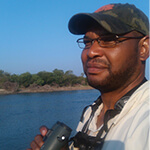 | Drew Lanham, Ph.D., is a Cultural and Conservation Ornithologist, author, and poet who holds ranks of Endowed Chair and Master Teacher in Clemson University's Department of Forestry and Environmental Conservation. |





































